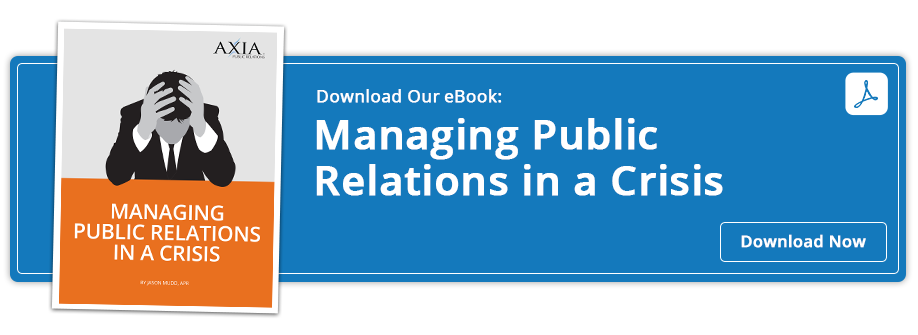Make sure your company is prepared when catastrophe strikes.
 From a PR lens, the fires that devastated parts of Maui stand as a stark example of the public relations challenges natural disasters can pose. With record-breaking wildfires becoming more frequent, PR experts must analyze past disasters to identify communication gaps and empower future readiness.
From a PR lens, the fires that devastated parts of Maui stand as a stark example of the public relations challenges natural disasters can pose. With record-breaking wildfires becoming more frequent, PR experts must analyze past disasters to identify communication gaps and empower future readiness.
Audio: Listen to this article.
The fire revealed outdated alert systems, shortfalls in fire safety education, and the need for robust crisis communication plans tailored to the community. These failures resulted in thousands forced to escape amidst chaos.
PR advisors emphasize the urgent need for early warning communication plans using multiple notification channels. Experts also counsel proactive collaboration with local groups, schools, and agencies to promote readiness through educational initiatives. Building relationships and increasing public awareness ahead of time enhances resilience when catastrophe strikes.
We have prepared six strategies to help prepare your company against PR challenges these natural disasters create.
1. Pre-Crisis Planning
Thorough pre-crisis assessments will help your company identify potential vulnerabilities, available resources, and public perception risks related to wildfire threats.
These risk assessments inform the creation of tailored crisis communication plans. Advisors recommend outlining scenario-based messaging frameworks and establishing protocols for coordinating across departments. Customized plans enable organizations to rapidly deploy appropriate communications tailored to the evolving details of an emergency.
Robust advance planning equips organizations with messaging frameworks flexible enough to address unforeseen factors during rapidly escalating wildfires. Cross-departmental coordination ensures efficient implementation of crisis communications when circumstances change.
2. Instant Communications
Implementing effective warning systems and social monitoring before disaster strikes allows for better PR when wildfires inevitably ignite. When wildfires occur, timely communication is critical but could be hindered by outdated systems. PR experts advise organizations to invest in advanced notification technologies to rapidly disseminate alerts and warnings across multiple channels.
Options include wireless emergency alerts that issue mass notifications to cell phones in affected areas via text. Social media monitoring also allows organizations to respond in real time to public concerns, provide updates on developing conditions, and correct misinformation. Two-way radio networks enable direct communication with response personnel and key stakeholders when other infrastructure fails.
The ability to instantly reach target audiences despite infrastructure limitations, adjust messaging based on evolving scenarios, and directly engage concerned public groups through digital platforms are essential crisis communication capabilities.
3. Strategic Partnerships
PR experts recommend developing partnerships with emergency response agencies, community leaders, and media outlets before crises occur. Proactive relationship building facilitates efficient coordination and credibility when urgently conveying public safety messages during wildfires. Aligning priorities ahead of time through collaboration enables organizations to rapidly disseminate critical information through trusted community channels.
4. Messaging Guidance
Effective crisis communications require clear, consistent, and compassionate messaging during chaotic events like wildfires. PR advisors counsel organizations to ensure all communications reduce panic, provide actionable safety information, express empathy, and align with organizational values. Sensitivity to evolving public sentiment and adjusting approaches accordingly allows organizations to maximize the impact and reach of crisis outreach efforts.
5. Mitigating Misinformation
PR experts caution that the fractured media landscape enables misinformation to spread rapidly during emergencies like wildfires. They advise organizations to monitor social channels and online spaces closely to get ahead of unverified rumors before they escalate. Providing prompt explanations of unfolding situations from authoritative sources helps redirect the narrative and reduce harmful misperceptions.
6. Post-Crisis Follow-Up
Even after containment, the PR response continues. Advisors recommend clearly expressing support for impacted communities, demonstrating transparency about ongoing risks and recovery plans, and assisting affected groups. Maintaining open communication and community collaboration is vital for restoring a sense of stability and organizational trust in the aftermath.
PR professionals who apply lessons from history can help organizations navigate the unique hurdles presented by each emergency, including increasingly frequent and destructive wildfires. Comprehensive crisis planning, combined with experienced advisors equipped to provide tailored guidance, establishes an empowered position when catastrophes strike.
To learn more about crisis control for your company, contact us today or book a one-on-one consultation.
Photo by Francesco Ungaro
Topics: crisis communications



Comment on This Article